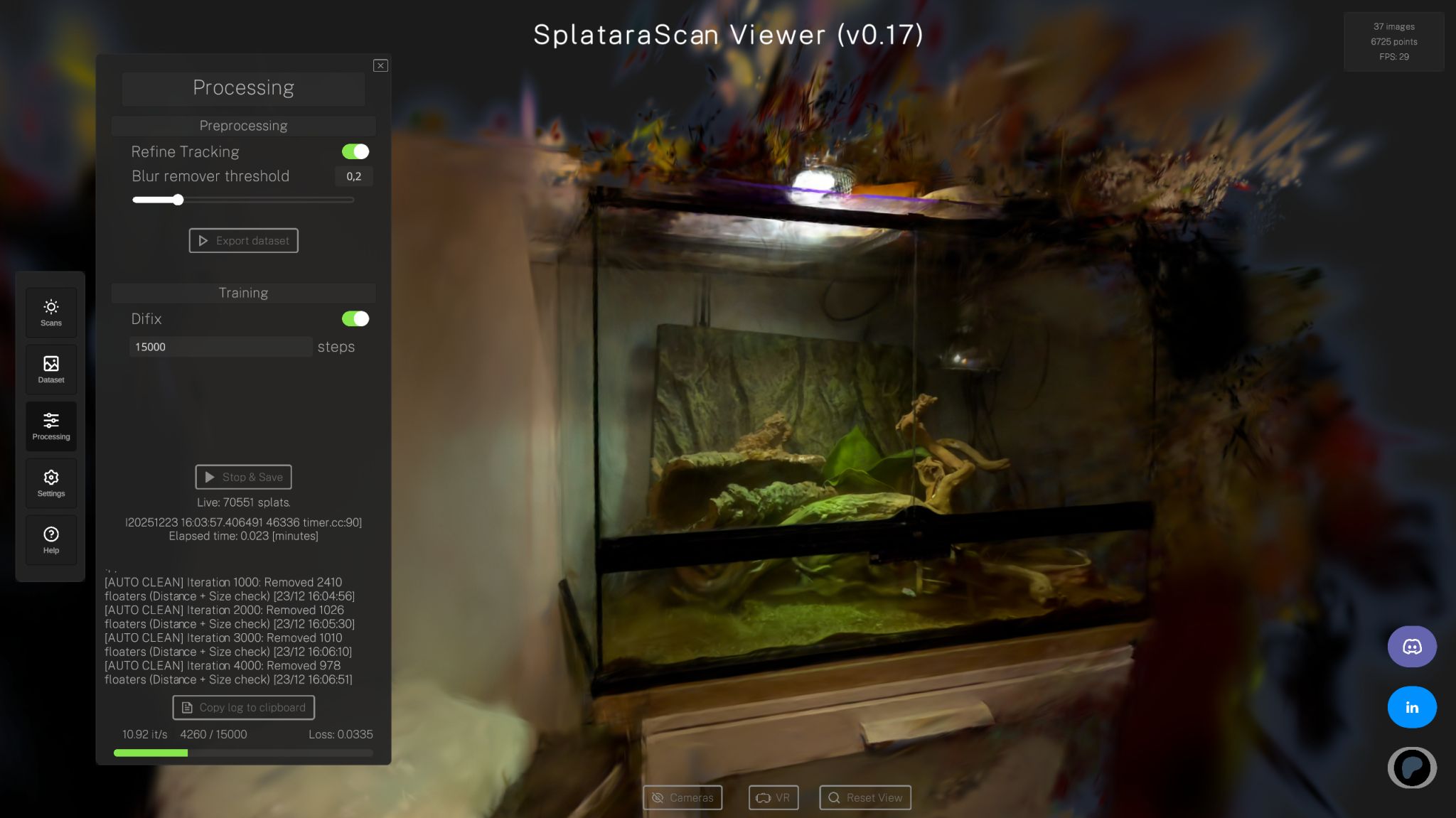
Michael Rubloff
Sep 17, 2025
DJI has officially taken the wraps off the Mini 5 Pro today, marking the next evolution of its ultralight drone series. While the company is pitching it as the most capable “mini” drone they’ve ever built, the specs tell a story that should catch the attention of anyone working with radiance fields like Gaussian splatting.
Mini 5 Pro is a new one-inch, 50 megapixel CMOS sensor with an f/1.8 aperture. That combination alone suggests a leap forward in image fidelity and low light performance, both critical for producing clean input data for Gaussian splatting. The gimbal system now rotates a full 225 degrees and allows for true vertical shooting, which is also featured on the Mini 4 Pro. Combined with HDR recording, 10-bit color, and options like D-Log M and HLG, the camera system seems like an exciting feature set.
Flight performance has been upgraded as well. DJI claims up to 36 minutes of airtime on the standard battery, with a longer endurance option pushing beyond 50 minutes. More time in the air translates directly into more angles, greater overlap between captures, and fewer interruptions mid mission. Safety and stability also get a boost thanks to omnidirectional obstacle avoidance and forward facing LiDAR, features that help keep the drone secure in environments where low light, tight spaces, or unpredictable terrain can complicate flight paths.
There is just one major problem for US buyers, in DJI will not be retailing the Mini 5 Pro in the United States.
These advances are particularly important for Gaussian splatting. High resolution and dynamic range improve the fidelity of reconstructed scenes, reducing noise and artifacts that often appear when source images vary too much in exposure or clarity. The expanded gimbal range opens new possibilities for coverage, making it easier to capture overhangs, tall facades, or areas that would otherwise suffer from occlusion. Longer flight times and built-in storage, 42 gigabytes on board, mean pilots can gather richer datasets without worrying about interruptions or transfer bottlenecks.
Of course, some limitations remain. Gaussian splatting still struggles with dynamic scenes, and while the Mini 5 Pro’s imaging capabilities reduce inconsistencies, they cannot eliminate the challenges posed by moving people, shifting light, or vegetation in the wind. Larger datasets also bring heavier processing demands, so anyone planning to push the new drone to its limits will need robust computing resources to fully capitalize on the improved image quality.
Still, today’s announcement feels significant. The Mini 5 Pro arrives at a moment when DJI itself has begun integrating Gaussian splatting into its Terra software, signaling the company’s belief in radiance field methods as a cornerstone of future 3D modeling. For researchers, filmmakers, surveyors, and hobbyists working in this space, the Mini 5 Pro promises not just an incremental upgrade, but a more reliable and versatile capture tool.
This drone may not solve every challenge of Gaussian splatting, but it does align with many of the technique’s demands: better input quality, richer angles, more consistent coverage, and safer flight. In short, it pushes the work of turning real-world spaces into lifelike digital environments one step closer to becoming effortless.







